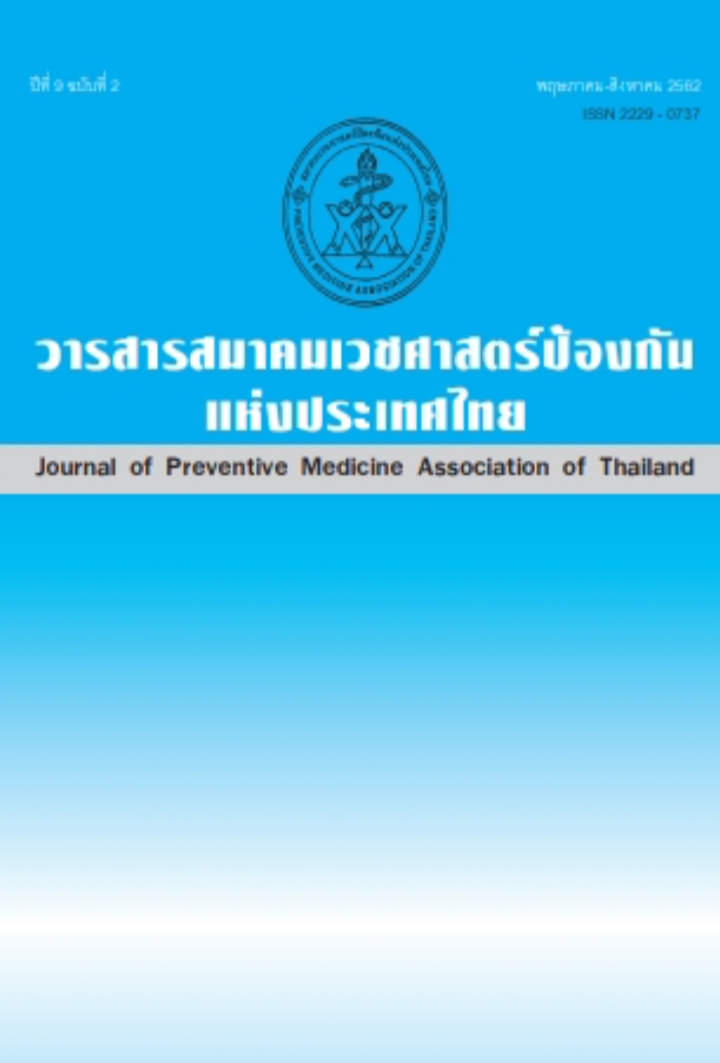Relation between functional efficacy of acute ischemic stroke and functional regression
Keywords:
stroke, functional efficacy, functional regressionAbstract
Acute ischemic stroke is a leading cause of sudden unexpected functional dependence that burdens families. 100 stroke patients were recruited to compare functional regression rate between “low functional efficacy group” and “high functional efficacy group” using different barthel index cut-off at the end of 48-hour and two-week periods of acute ischemic stroke. By the Fisher’s exact test, the barthel index below 35 at the end of 48-hour and two-week periods are significant to related to functional regression at the end of three-month period statistically (p<0.05).
References
2. สำนักโรคไม่ติดต่อ กระทรวงสาธารณสุข. รายงานภาระโรคและการบาดเจ็บของประชากรไทย พ.ศ. 2554. นนทบุรี: สำนักงานพัฒนานโยบายสุขภาพระหว่างประเทศ; 2557.
3. Rodrígrez-Castro E, Lopez-Dequit I, Santamaría-Cadavid M, Arias-Rivas S, Rodríguez-Yáñez, José M, Pumar JM, et al. Trends in stroke outcomes in the last ten years in a European Tertiary Hospital. BMC Neurology 2018.18:164.
4. van Bragt PJ, van Ginneken BT, Westendorp T, Heijenbrok-Kal MH, Wijffels MP, Ribbers GM. Predicting outcome in a postacute stroke rehabilitation programme. Int J Rehabil Res 2014;37:110-7.
5. Obiako OR, Oparah SK, Ogunniyi A. Prognosis and outcome of acute stroke in the University College Hospital Ibadan, Nigeria.Niger J Clin Pract 2011;14:359-62.
6. Ullberg T, Zia E, Petersson J, Norrving B. Changes in functional outcome over the first year after stroke: an observational study from the Swedish stroke register. Stroke 2015;46:389-94.
Downloads
Published
How to Cite
Issue
Section
License
บทความที่ลงพิมพ์ในวารสารเวชศาสตร์ป้องกันแห่งประเทศไทย ถือเป็นผลงานวิชาการ งานวิจัย วิเคราะห์ วิจารณ์ เป็นความเห็นส่วนตัวของผู้นิพนธ์ กองบรรณาธิการไม่จำเป็นต้องเห็นด้วยเสมอไปและผู้นิพนธ์จะต้องรับผิดชอบต่อบทความของตนเอง






